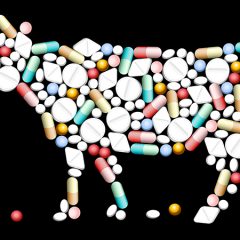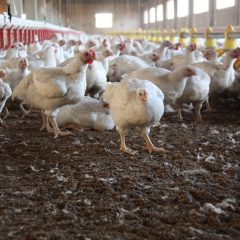Note — The following comments were submitted by Chuck Benbrook to the AMS/USDA today, in response to the Department’s proposal to withdraw the Organic Livestock and Poultry Practices Rule. I am writing to urge the Department to quickly finalize the OLPP rule, rather than withdraw it. If the USDA continues on its proposed course of […]
Read More, References, Comment »
Despite the mountains of evidence showing that we are loosing the race to preserve the efficacy of medically important antibiotics, sales of these vital drugs to livestock farmers have risen 26% since 2009, according to the latest FDA report on the subject, “Antimicrobials Sold or Distributed for Use in Food Producing Animals”. I first studied […]
Read More, References, Comment »
Dave Flynn and Cory Carman own and manage one of the wonderful, productive and beautiful grass-based cattle operations in the Pacific Northwest. The fourth-generation, 2,500+ acre Carman Ranch in Wallowa, Oregon is just over the ridge from where I live, near Troy, Oregon. We have bought our beef for years from the Carman Ranch, and more […]
Read More, References, Comment »
On 10/16/16 The Wall Street Journal posted an interesting interview with Jim Purdue, chariman of the mega poultry agribusiness Purdue Farms, Inc., discusses why Purdue eliminated routine use of antibiotics for growth promotion and disease prevention, and what happened as a result. Purdue discusses how consumers are looking at their food the way they look […]
Read More, References, Comment »
Almost all beef cattle entering feedlots in the United States are given hormone implants to promote faster growth. The first product used for this purpose – DES (diethylstilbestrol) – was approved for use in beef cattle in 1954. An estimated two-thirds of the nation’s beef cattle were treated with DES in 1956 (Marcus, 1994, cited […]
Read More, References, Comment »
A European team lead by the Swiss scientist Lukas Rist has found that mothers consuming mostly organic milk and meat products have about 50 percent higher levels of rumenic acid in their breast milk (Rist et al., 2007). This Conjugated Linoleic Acid is responsible for most of the health benefits of CLAs in milk and […]
Read More, References, Comment »






